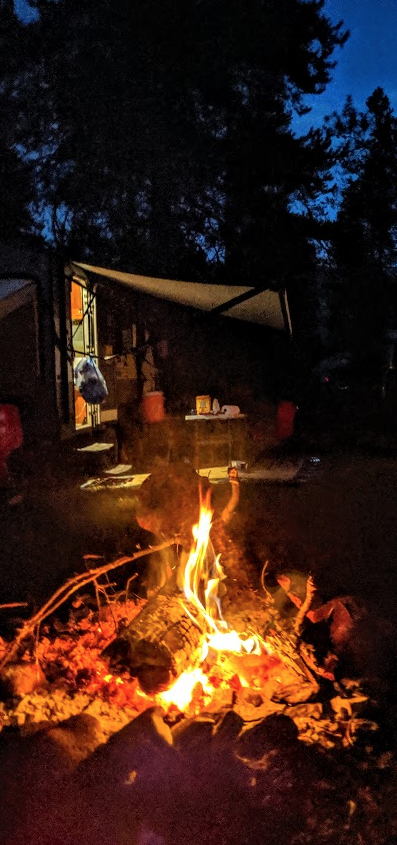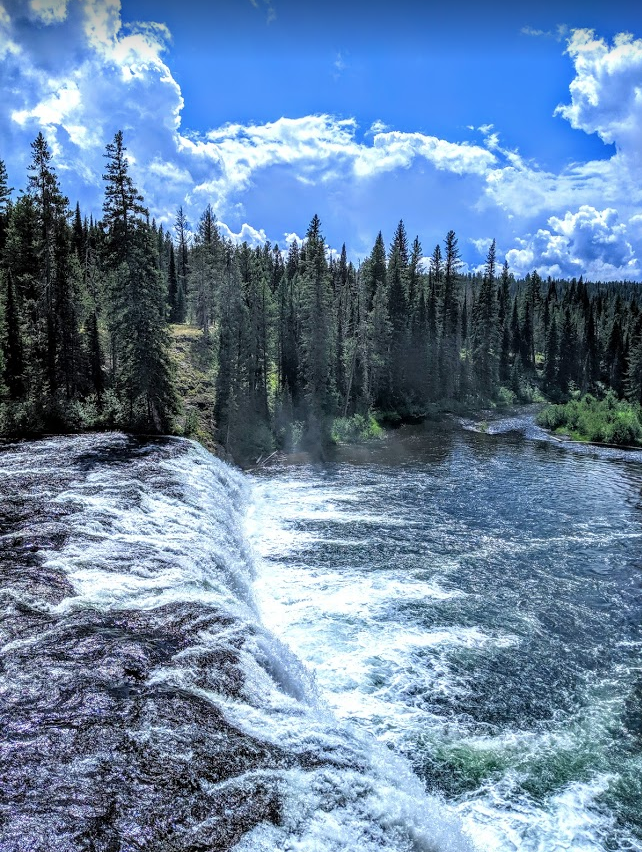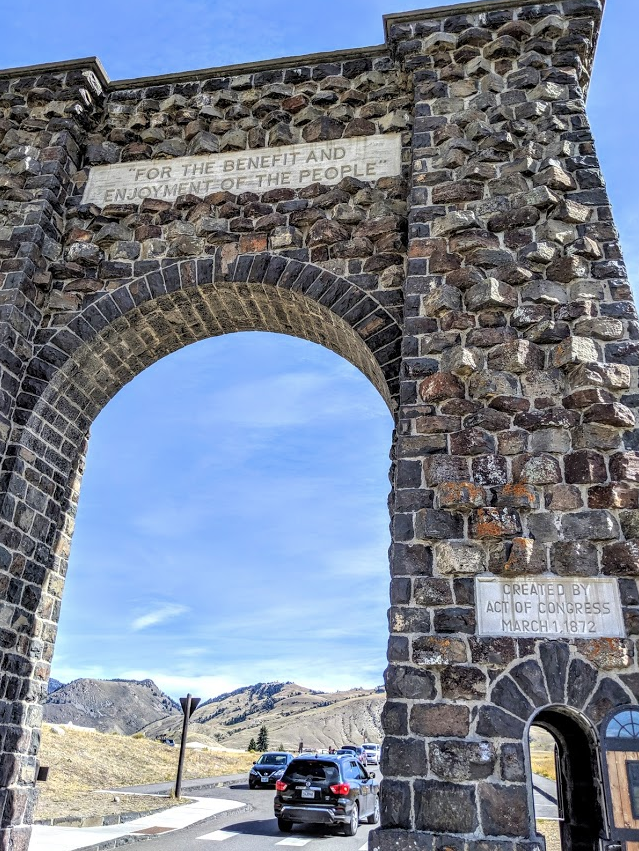It’s no spectacular feat of modern engineering, but it represents one of the greatest achievements in the history of conservation. The Roosevelt Arch, constructed to mark the north entrance to Yellowstone National Park just outside of Gardiner, Mont., captures the essence of public lands protection in America, and it’s a threshold every American should have the chance to cross.
Constructed over about six months in 1903, the arch cost taxpayers about $10,000, which, today, would be around $250,000. Oddly enough, according to Yellowstone Forever, the non-profit organization dedicated to protecting Yellowstone, Hiram Chittenden of the U.S. Army Corps of Engineers pushed for the arch’s construction because the north entrance to the park “lacked suitable grandeur.”
Anyone who’s been to the park knows that Yellowstone itself is home to more grandeur than the average person might view in a lifetime. When it was dedicated in August 1903 amid a great celebratory ceremony marking its construction, President Theodore Roosevelt laid the cornerstone. The arch bears his name to this day.
And, while the arch is impressive, it’s the message that’s scrawled atop the arch that most Americans should heed: “For the benefit and enjoyment of the people.”
Yellowstone was the world’s first national park. It was the living laboratory for one of mankind’s greatest ideas: protecting our resources for the sake of the resources themselves and the people who marveled at them and understood their intrinsic value to the nation. We can thank our country’s earliest conservationists for helping nurture the idea of protecting important landscapes—Yellowstone became the birthplace of the National Park Service and the U.S. Fish and Wildlife Service. It defined the Department of the Interior and likely spawned the U.S. Forest Service and the Bureau of Land Management.
One thing our predecessors did correctly—largely in response to the alarmingly quick rate of resource depletion—was recognize that the vast swaths of land in the American West were the country’s true national treasure. This remains so to this day.
But there’s legitimate worry that our public lands will lose their relevancy in the digital age … that modern Americans armed with smartphones and myriad electronic distractions will no longer value the open spaces and the priceless landscapes that belong to them. Concerted efforts to cede public lands to private interests by industry and their sponsored legislators in statehouses and in the U.S. Capitol continue to pop up.

It’s disheartening for people like me, who might spend 100 days a year on public lands, armed with fly rods, shotguns and the like. These are the places where anyone can wander unimpeded, where no permission is needed … where no blessing from nobility is required.
I tried to explain this recently to a great friend of mine, and I think I made my point. We were camping in a great spot in Idaho’s Targhee National Forest, not too far from the southwest entrance to Yellowstone, the infrequently visited “Cascade Corner,” marked by waterfalls and wild, untrammeled country.
“This belongs to you,” I remember telling my friend. “You have an equal share in the ownership of this land alongside every other American. It doesn’t belong to the government. It belongs to you. The government is the property manager for you. You are the landlord.”
My friend, a long-time potato farmer here in eastern Idaho and now a successful hotelier and entrepreneur, seemed a bit taken aback.
“For some reason,” he said, “I never thought of it that way. I always assumed this land was the government’s land. I’ve never really grasped the ownership concept. And it makes sense.”
“Does it make you care more about what happens to these places?”
“Yes,” he said. “Very deeply.”
We spent the rest of the camping trip with friends and family remarking on the idea that every step we took, every fishy bend we cast over in the nearby creek and every rock we rounded up for the firepit was done on land where we could, within reason, do as we pleased. For my friend, it was a great awakening.

We drove up the bumpy gravel road to its terminus at Cave Falls, where the trailhead to one of the best backcountry hikes in the park starts—the trail to Bechler Meadows where big, fat wild trout swim. As we stood atop the viewpoint overlooking the spot’s namesake waterfall, I remember looking at my friend and his wife, and I could tell that the message was sinking in.
“We’ve lived here our whole lives,” he said to me later that evening around what might have been the perfect campfire. “And we’ve never been to Cave Falls. It never crossed my mind that a place so beautiful and remote actually belonged to us.”
I sank into my camp chair and rested a foot on the rocky fire ring we’d constructed earlier in the trip.
“For the benefit and enjoyment of the people.”
My friend looked at me.
“Where have I heard that before?” he asked. I told him the story of the Roosevelt Arch, and how much it cost and why it was constructed.
“I don’t think that the average American understands that,” he said. “I didn’t understand it until you explained it to me.”
And that’s the cautionary tale, right there.
As Americans, we are the owners of some 640 million acres of public land and all the resources contained within them. We are the rightful stewards of every trout swimming in every stream on every acre of land managed for us by the government we fund with our taxpayer money. We own 28 percent of the country.
The government doesn’t own it. Mining companies, logging conglomerates and oil and gas corporations don’t own it. You do. I do. It’s managed on our behalf by federal agencies like the Forest Service, the Park Service and the BLM. Our elected officials in Congress fund it every year (sadly, in the most Spartan of fashions) on our behalf.
And while all of us should, as a reminder or an epiphany, wander beneath the Roosevelt Arch, not enough of us do. And because not enough of us ever “thought of it that way,” our birthright … our national treasure … is in peril.
September is Public Lands Month. Enjoy what’s yours. Protect it from the black hats that would do their best to take it from you.
Chris Hunt is the national digital director for Trout Media. He lives and works in Idaho Falls, and recently penned the book, “Catching Yellowstone’s Wild Trout: A Fly Fishing History and Guide.”



